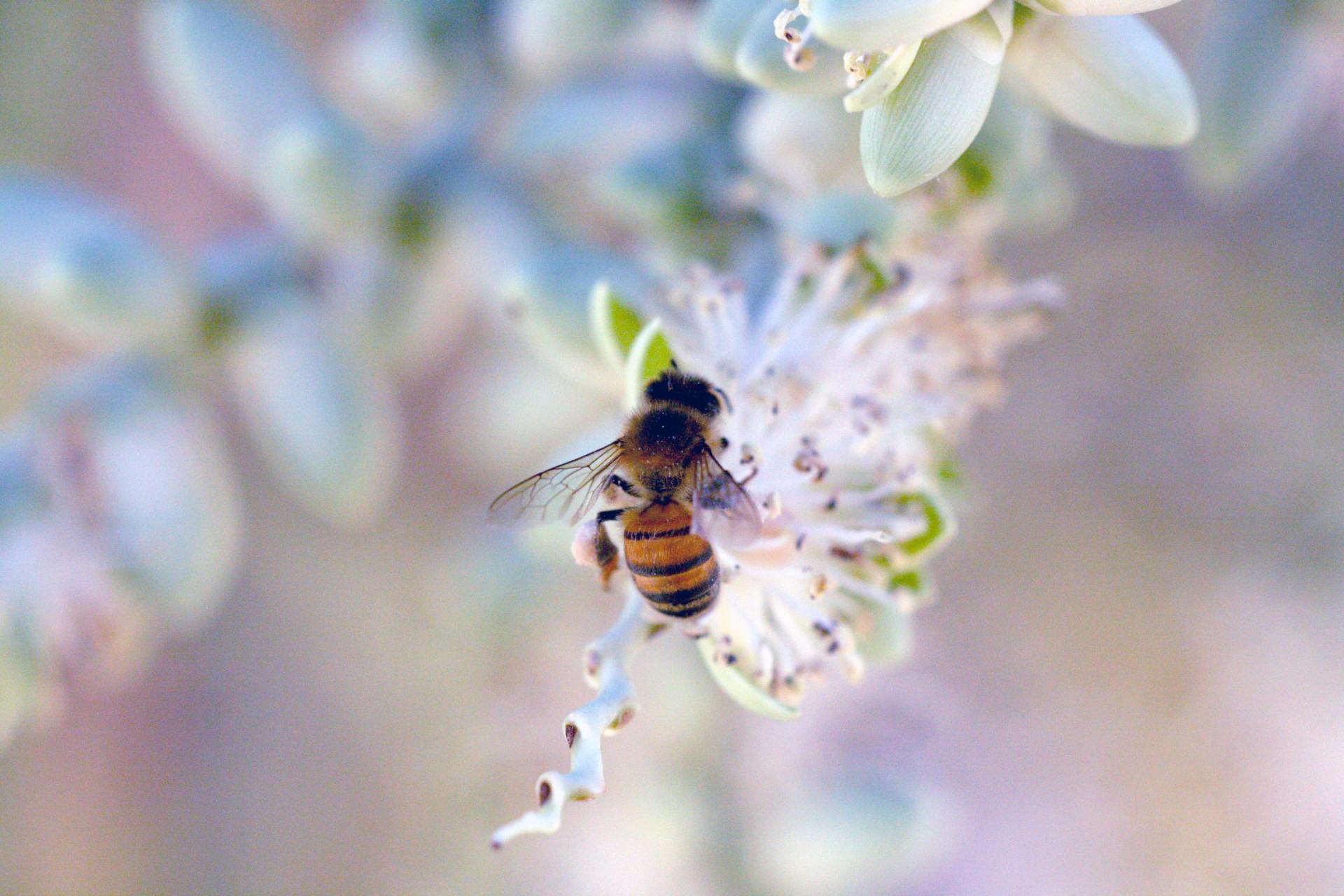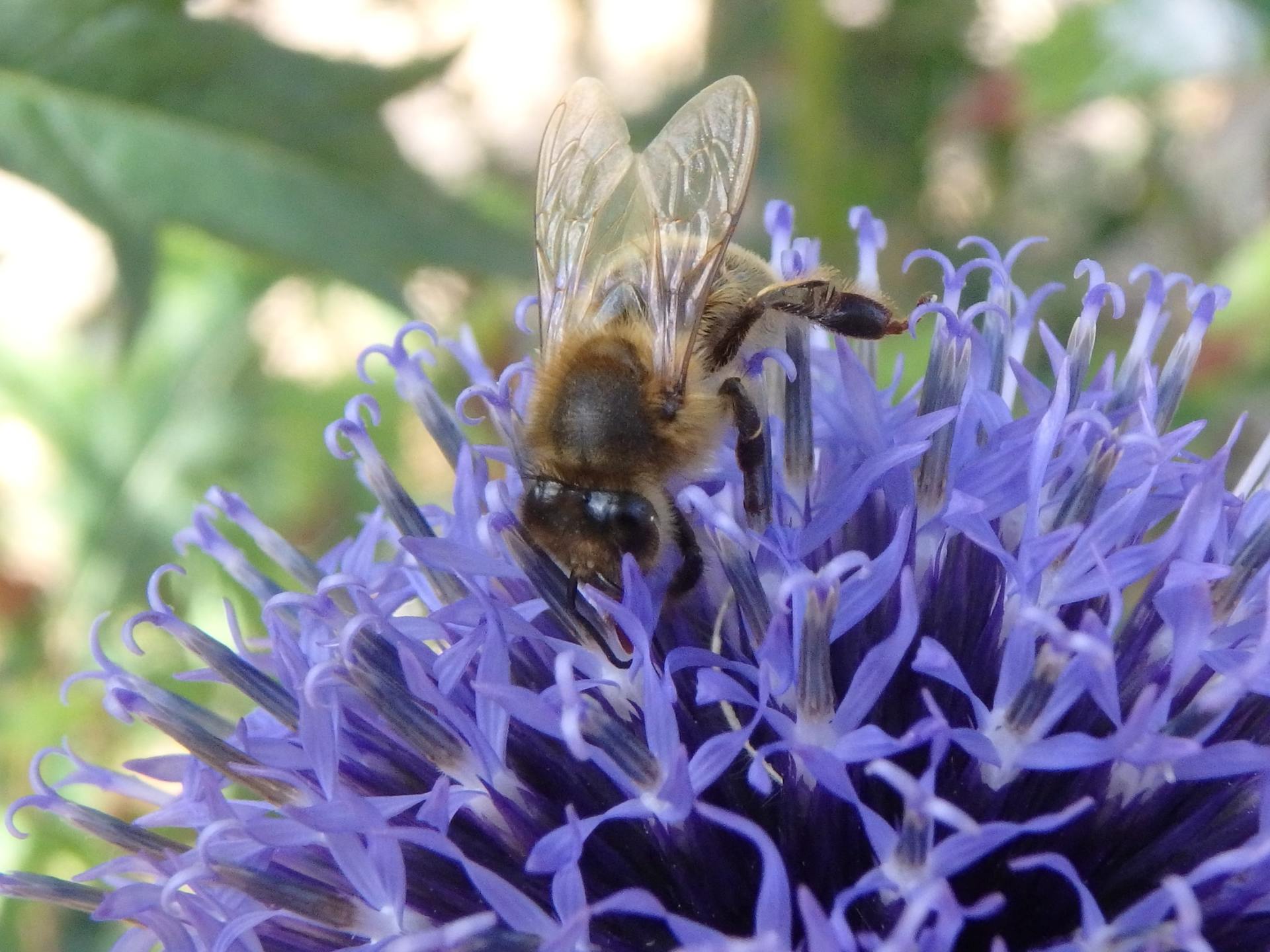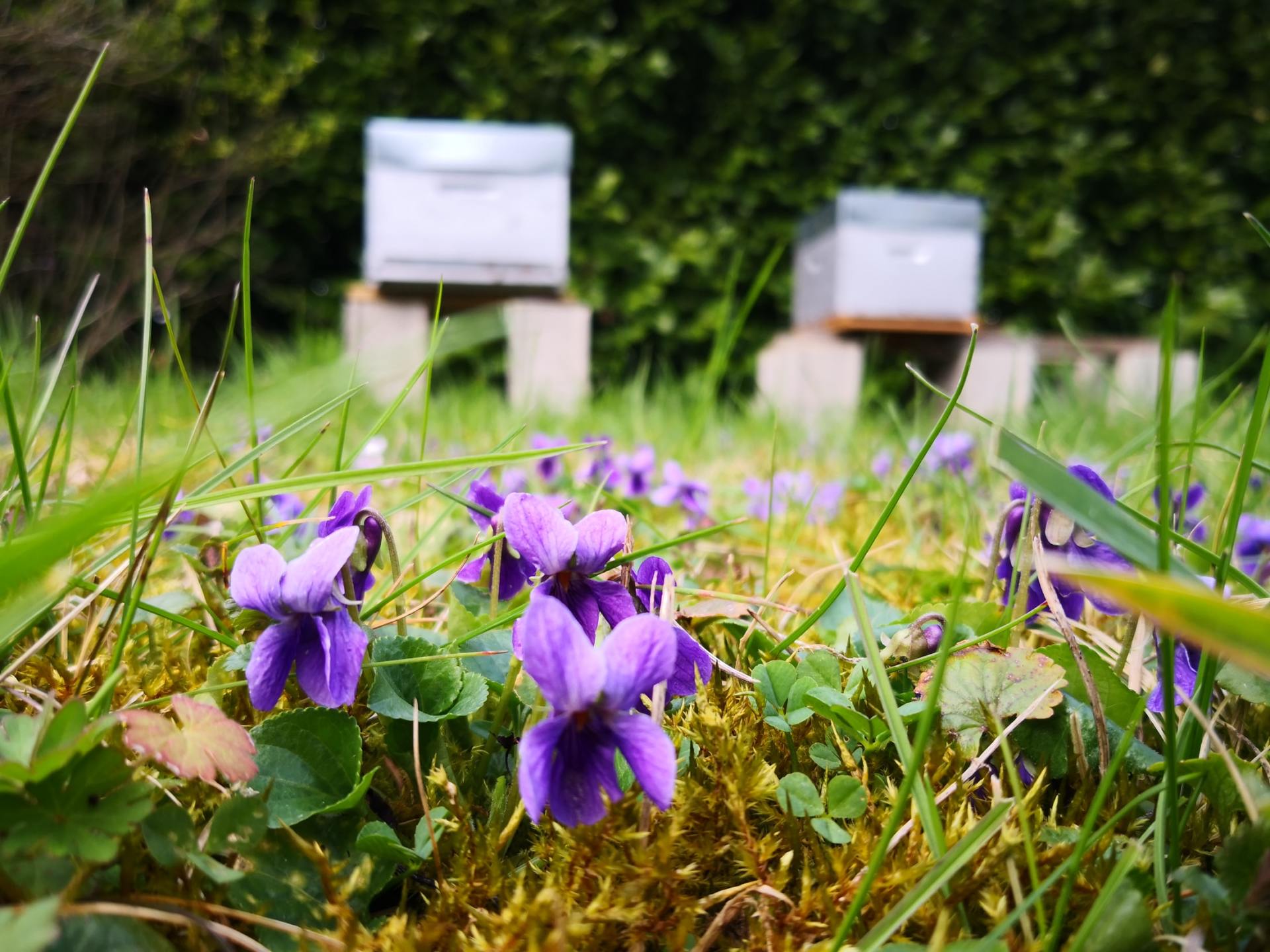I get this question a lot: “We just bought land and we’re eager to plant for our bees; what should we plant?” When a new beekeeper recently asked this, I could tell he was surprised at my answer: “Your bees may benefit as much by what you protect on your land than what you plant on it.”
Pollen analysis
A few years ago I would have handed this new land owner a standard list of bee plants. But that changed when I began to send annual honey samples to Dr. Vaughn Bryant, Director of the Palynology Laboratory at Texas A&M University. Palynology is the study of pollen grains. And this lab is where Dr. Bryant performs a sort of “retrospective research” on honey. It’s called pollen analysis and the results help us understand where bees forage. You might say the flowers in a honey jar tell a story – a story of the bee, the land, and how the beekeeper stewards the relationship between the two.
A pollen analysis is done on a small sample of honey using light microscopy to identify pollen to the genus level of a plant. The types and percentages of pollen in honey are not a 1:1 correlation with their nectar source. However, “pollen coefficient ratios” are used to adjust for the limitations and establish more reliable determinations of nectar sources.
I get an annual pollen analysis on every new honey harvest. But I was most surprised at my results from the drought year of 2010. A single plant dominated our honey – a plant I’d never even heard of! Honey is classified as – and can be sold as – a Unifloral honey when pollen from a single source is 45% or higher. My honey that year was 61% Rattan Vine or Alabama Supplejack (Berchemia scandens). I later identified this plant wrapping and winding up trees well within the bee’s forage range. Thank goodness I favor “wildscapes” rather than manicured landscapes. These rich nectar vines would typically have been cleared away as messy, unwelcome brush on most yards and properties.
Here are a couple of things I’ve learned from honey pollen analyses.
The flowers in a honey jar may be tiny, inconspicuous blossoms.
Nectar blossoms may be mere “wallflowers”. Unnoticed. Unappreciated. Flowers may be tiny, tinted green, located high on a vine or tree, nestled under leaves or in bloom only a few days a year. Identify plants before clearing, redefine a weed and allow some wild areas to thrive.
The flowers in a honey jar will be different every year.
The pollen, and thus nectar, in your honey will differ in type and percentage from year-to-year. This difference can be dramatic. Nectar secretion in the nectaries of many honey plants is affected by the amount and timing of rainfall, light, humidity and temperature. A larger diversity of plant life helps to ensure bees are well nourished and productive.
Interested in learning more about honey pollen analyses? Go to www.texasbeekeepers.org. Click Resources; click Journal; see July-Aug Journal article,“Buds and the Bees” for more information on pollen analysis. (If the July-Aug Journal is not yet posted, please check back later.)


